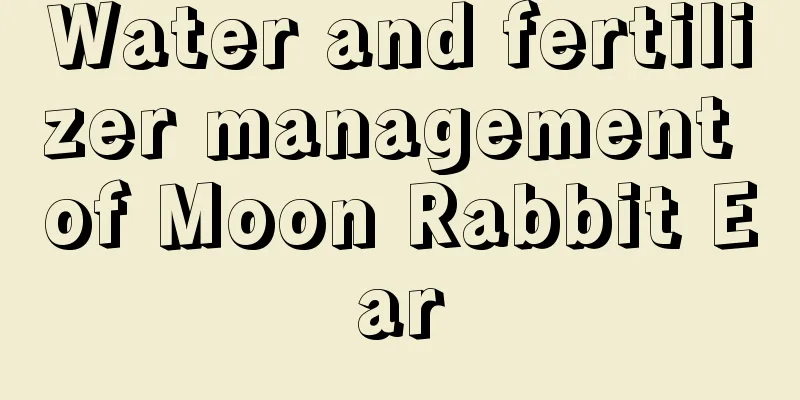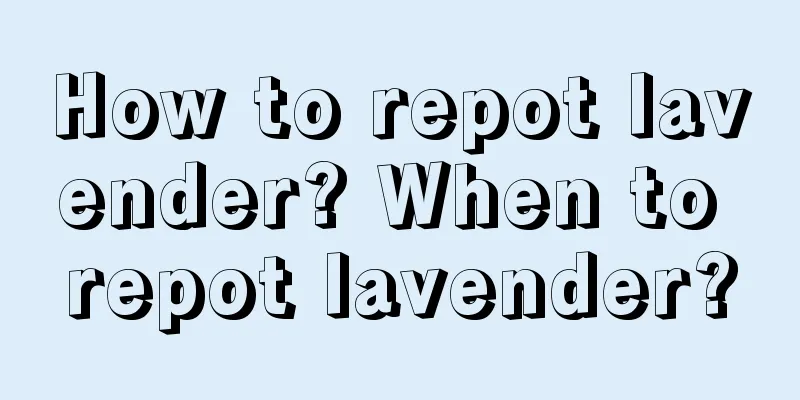Water and fertilizer management of Moon Rabbit Ear

Watering tips for Moon Rabbit EarsThe moon rabbit ears like a dry environment, tolerate partial shade, are afraid of waterlogging, and are afraid of stuffiness and humidity. Therefore, special attention should be paid to watering. First of all, because the moon rabbit ears grow in cool seasons and hibernate in summer, different watering methods should be used according to the different characteristics of the moon rabbit ears in different periods. In summer, due to the high temperature, the growth of moon rabbit ears will slow down or even stop growing and enter dormancy. Therefore, you should reduce watering at this time. However, reducing watering in summer does not mean cutting off water. The moon rabbit ears still need to be watered throughout the summer, otherwise the leaves of the moon rabbit ears will dry up. You can water it twice a month, in the evening after the sun sets and the temperature drops, and you only need to give it a small amount of water. The temperature in winter is relatively low, and rabbit ears may not be able to withstand temperatures below 10 degrees. Therefore, water should be basically cut off throughout the winter and the soil in the pot should be kept dry to prevent frostbite on the plants. During the peak growing season in spring and autumn, do not water excessively, because the Moon Rabbit Ears are afraid of water, so it is best not to have water accumulation in the pot, just keep the soil in the pot slightly moist. Fertilization tips for moon rabbit earsThe growth of moon rabbit ears is relatively slow, so the amount of fertilizer applied is also small. When applying fertilizer, you can apply fertilizer once a month during the peak growing season in spring and autumn, and stop applying fertilizer in winter. It is worth noting that the amount of fertilizer should not be too much, otherwise it will cause the plant to grow too tall. Be as careful as possible when applying fertilizer and do not let the fertilizer stick to the stems and leaves, otherwise it may cause the leaves to turn yellow, the stems and leaves to rot, and cause seedling burn. |
<<: How to prevent orchid diseases and pests
>>: How to grow orchids with better quality
Recommend
What fertilizer is good for longevity flowers
Overview of Kalanchoe fertilization Kalanchoe is ...
How to propagate freesia
1. Seed propagation Cut flower varieties are usua...
Common pests of dragon blood tree and their control methods
Red Spider Symptoms Due to the dry environment, i...
How many years does it take for a Bodhi tree to bear fruit?
Introduction to Planting Bodhi Trees The Bodhi tr...
How to care for the small fortune tree and make it lush
Growth conditions of small fortune tree When plan...
Maintenance methods and precautions of the string money vine
Maintenance methods of vine Moisture Money vine l...
How to grow alum root, alum root pictures
1. How to grow alum root 1. Light: Alumroot likes...
How to care for Amaryllis in winter
1. Keep warm Amaryllis cannot withstand the cold ...
How to grow daffodils so that they bloom
Daffodil blossoms Daffodils are different from ot...
How to eat lotus? Is it good for your health?
1. How to eat 1. Deep-fried flower petals: Pick t...
How to trim the coral
When to prune the coral The coral reef is a succu...
How often should you water your apple tree?
How often should you water your apple trees? Appl...
Can you transplant saplings in autumn? The best time and precautions for transplanting trees in autumn
Can trees be transplanted in autumn? In autumn, y...
When is the best time to prune the swallowtail palm?
The effect of pruning the bird's nest The bir...
How to propagate coleus and what to pay attention to
How to propagate coleus Coleus can generally be p...









